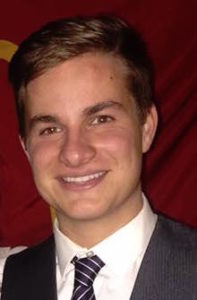
Steffen Timmer interviewed Jim, a Notre Dame professor who has sent two kids to Penn High School.
Date: 3/6/2017
Type: User Interview
Location: Mendoza 244
Team participants: Conducted interview alone
User Characteristics: Notre Dame Economics Professor
Male
Two children, one boy, one girl
Son just graduated from Penn High School, son went to Christ the King middle school which is near Clay High School
Daughter is a freshman at Penn High School
Live in Penn High School district
What is this person about – what drives him/her? Jim wanted to find the best school for his children. He wanted a school where they could succeed in academics and extracurricular activities.
What is this person’s biggest point of pain? Paying for a private school. He did not want to take on the added expense.
Memorable quotes from interview:
“I didn’t really consider Trinity and St. Joseph’s because I didn’t want the added expense if it was not necessary”
“I really like AP courses because I am heavily involved with AP testing”
Top 3 Learnings:
- Parents will move to a school district in order to get their children into the public high school they want. Jim had planned ahead of time when moving to South Bend where to live based on what high school he wanted his children at.
- AP courses and dual credit courses are attractive to parents. Both types of courses provide ways to attain college credit and save money for parents.
- Son really enjoyed Penn and that was a big reason why they also had their daughter go to Penn.
Key Insight – (1) AP courses and dual credit courses can be marketed as better than IB courses. Jim did not know much about the IB courses, but knew about AP courses and also liked the fact that Penn offered dual credit courses through Indiana University and Ivy Tech. (2) Sports and size may play a role in creating opportunities at the high school. Kids want to compete to be the best, and with a size of 3600 students, Penn has a lot of money to offer various programs that can attract students.
